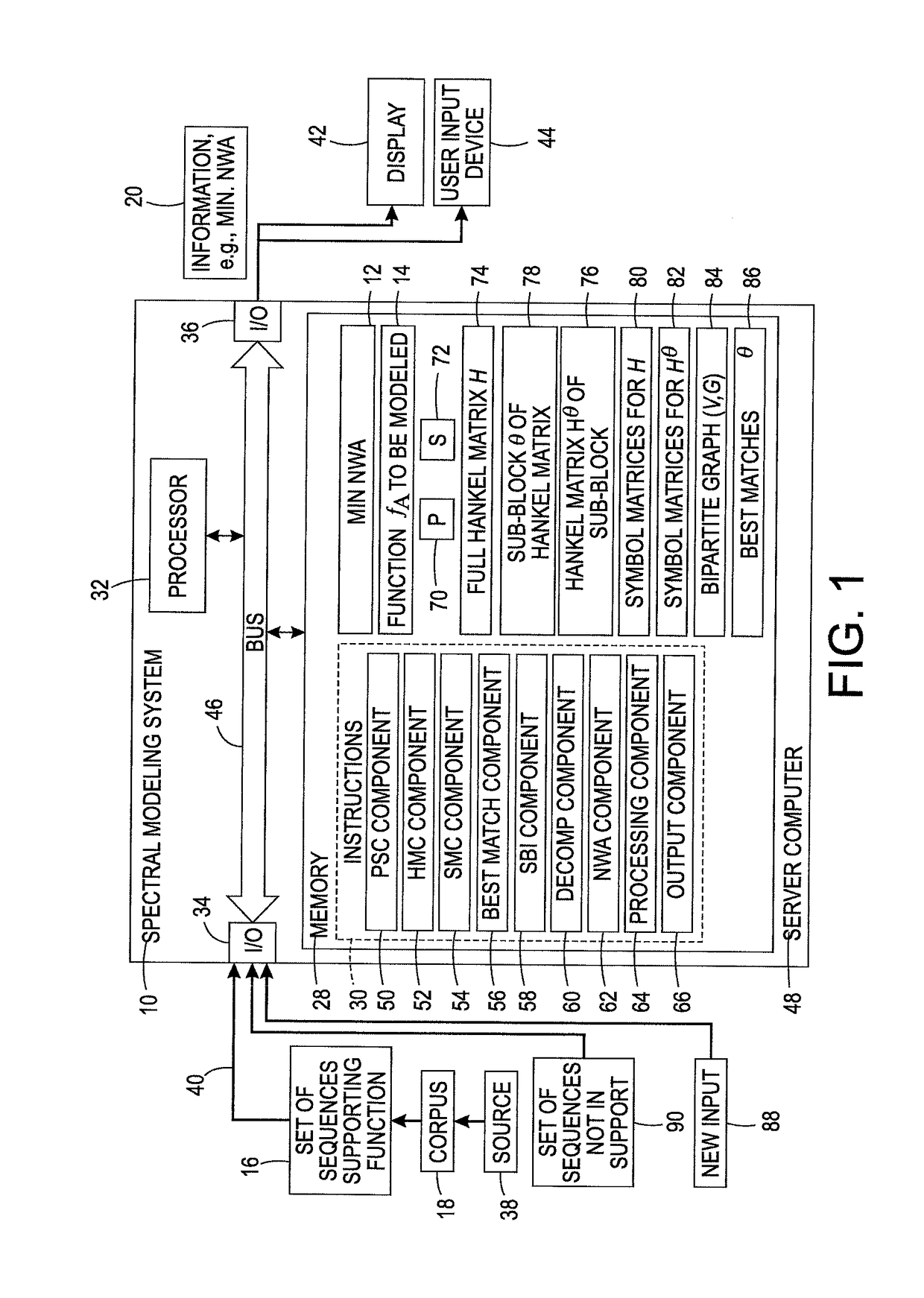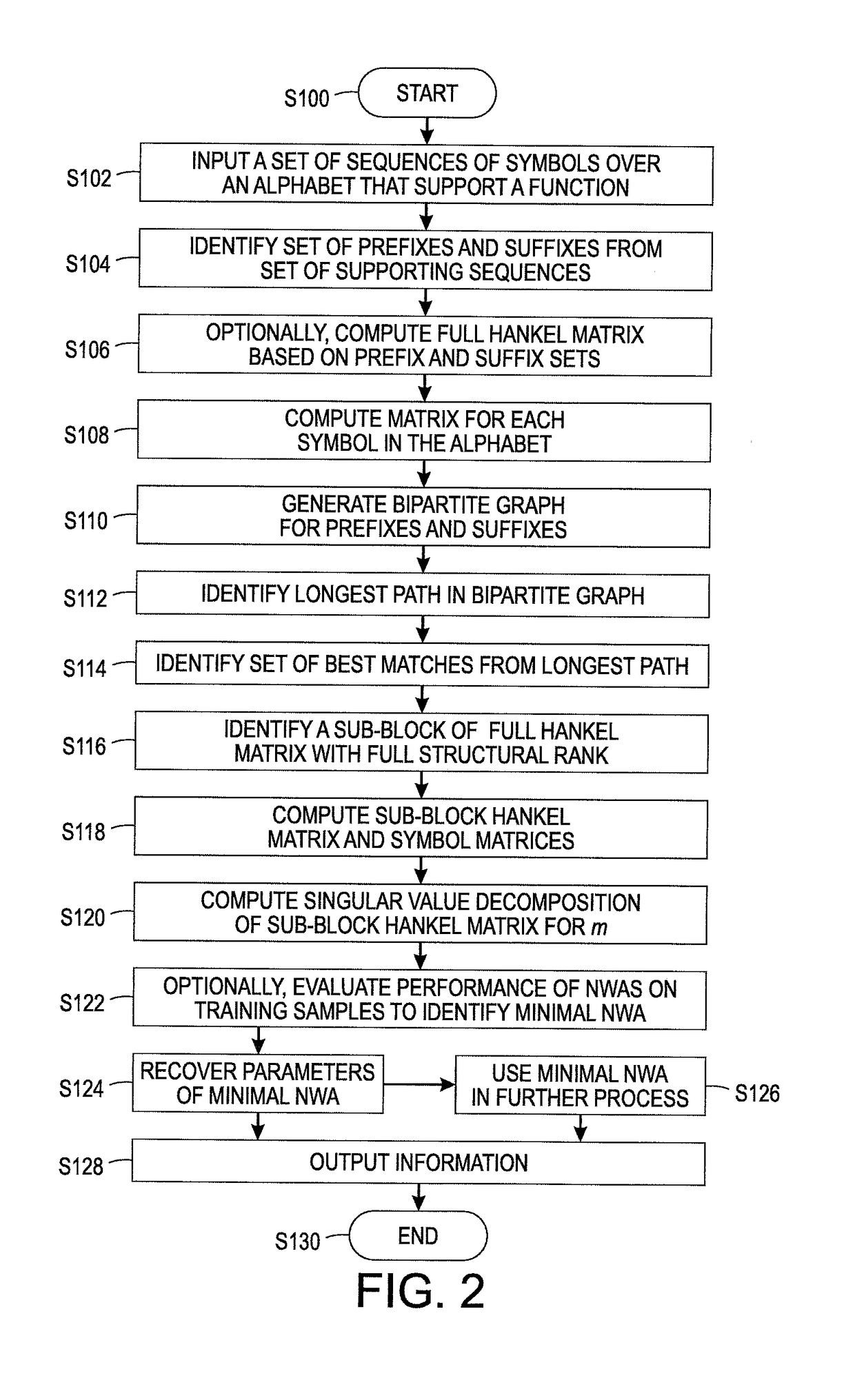Scalable spectral modeling of sparse sequence functions via a best matching algorithm
a spectral modeling and best matching technology, applied in the field of sequence modeling, can solve the problems of common algorithms for sparse svd that may prove too slow, and the size of h may grow exponentially
- Summary
- Abstract
- Description
- Claims
- Application Information
AI Technical Summary
Benefits of technology
Problems solved by technology
Method used
Image
Examples
example 1
n of Execution Time with Different Augmenting Path Algorithms
[0137]Making a theoretical analysis of the worst-case behavior of the exemplary method using the Augmenting Path Algorithm described herein is challenging. While each iteration of the algorithm is never worse than the baseline augmenting path method (it is assumed that the checks can be done in time (|E|), assuming a bitset implementation of sets), it may sometimes be the case that none of the shifted pairs are free, and therefore the algorithm only adds computations without improving the matching.
[0138]An empirical comparison of its execution time for the General Augmenting Path Algorithm and the Modified Algorithm considering heuristics was performed on synthetic data: Random strings were generated with different alphabet sizes, and different average length (by sampling from a Gaussian distribution with a variance of 0.5). The algorithms were implemented in the Python programming language. The respective times are plotte...
example 2
[0140]To validate the exemplary method on real data, experiments were performed on modeling the character-level distribution computed from English sentences appearing in the Penn TreeBank (PTB) corpus (see Mitchell P. Marcus, et al., “Building a large annotated corpus of English: The Penn TreeBank,” Computational Linguistics, 1993). In the reconstruction experiments, two problems are considered: 1) Finding the minimal NWA that computes the expected number of times that a character n-gram (a sequence of characters) appears in the corpus, and 2) Finding the minimal NWA that recognizes the observed character n-grams, i.e., a function that outputs 1 for observed n-grams and 0 for unobserved n-grams.
[0141]Experiments were performed with n-grams up to length three, i.e., learning a function ƒ:Σ≦3→. The reason for choosing a relative small T is to be able to run the upper-bound (i.e., performing SVD on the complete Hankel matrix H, for comparison purposes) and the size of the corresponding...
PUM
 Login to View More
Login to View More Abstract
Description
Claims
Application Information
 Login to View More
Login to View More - R&D
- Intellectual Property
- Life Sciences
- Materials
- Tech Scout
- Unparalleled Data Quality
- Higher Quality Content
- 60% Fewer Hallucinations
Browse by: Latest US Patents, China's latest patents, Technical Efficacy Thesaurus, Application Domain, Technology Topic, Popular Technical Reports.
© 2025 PatSnap. All rights reserved.Legal|Privacy policy|Modern Slavery Act Transparency Statement|Sitemap|About US| Contact US: help@patsnap.com



